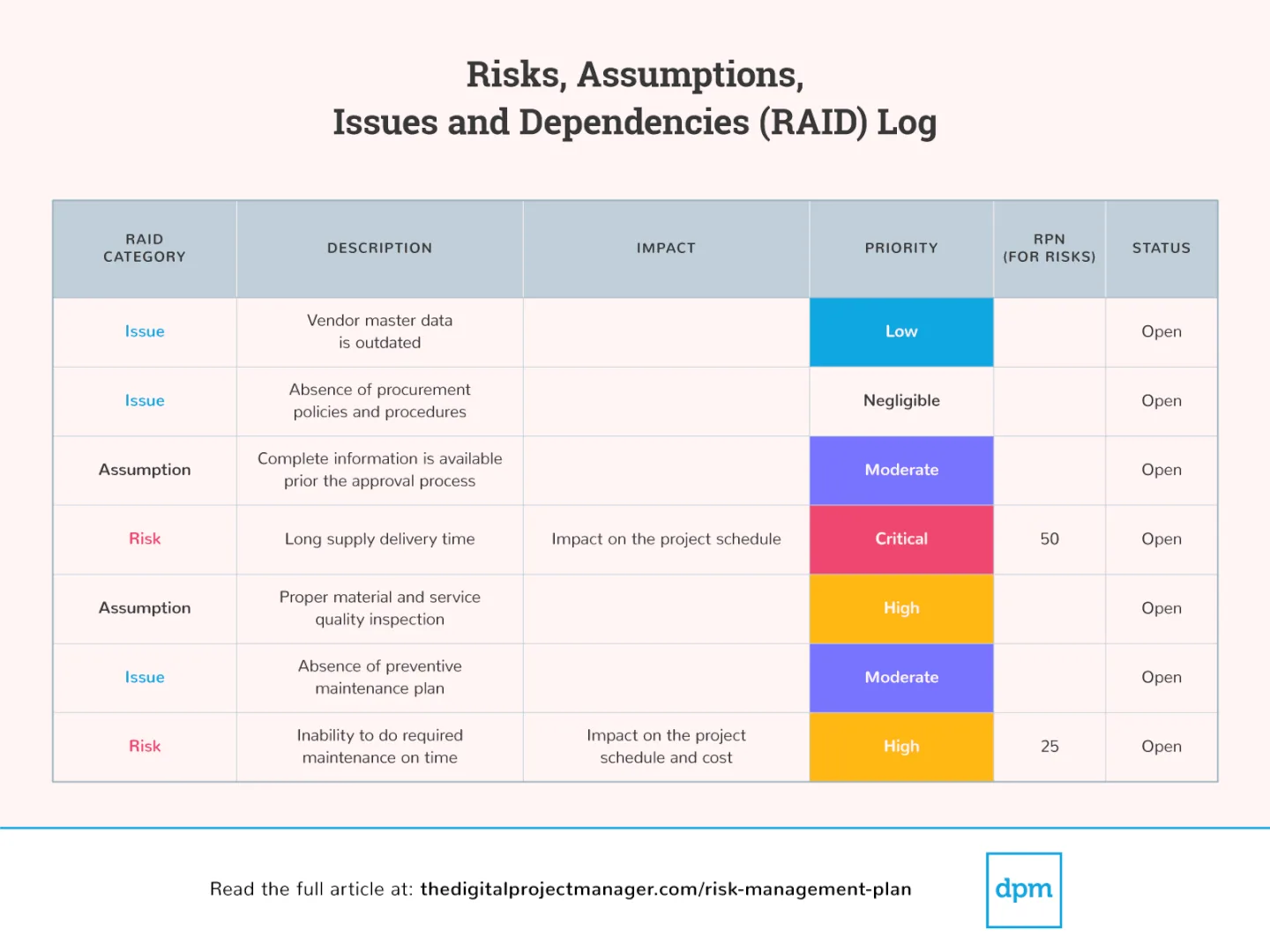Introduction
A well-executed project requires more than just careful planning and resource allocation. It also requires proactive identification, assessment, and mitigation of potential risks. A robust risk management plan plays a pivotal role in ensuring the success of a project by minimizing uncertainties and maximizing opportunities. In this blog post, we will delve into the essential steps involved in crafting an effective risk management plan that enables project teams to anticipate and address potential obstacles in a systematic and organized manner.
Define the Project and Its Objectives
Before diving into risk management, it is crucial to have a clear understanding of the project's scope, goals, and objectives. Define the project's purpose, deliverables, timelines, and budgetary constraints. By establishing a solid foundation, you can identify risks specific to the project and align risk mitigation strategies accordingly.
Identify Risks
The first step in risk management is identifying potential risks. Engage with key stakeholders, project team members, and subject matter experts to gather insights and perspectives. Conduct brainstorming sessions, review historical data from similar projects, and analyze external factors that could impact your project. Categorize risks into broad categories such as technical, organizational, or environmental risks to ensure comprehensive coverage.
Assess Risks
Once risks are identified, the next step is to assess their potential impact and likelihood of occurrence. Develop a risk assessment matrix to rank risks based on severity and probability. This matrix will enable you to prioritize risks and allocate appropriate resources for mitigation efforts. Assign numerical values or labels to each risk, such as high, medium, or low, to guide subsequent risk management activities.
Develop Risk Response Strategies
With a clear understanding of the identified risks, it's time to formulate risk response strategies. There are four main strategies for managing risks:
a. Avoidance: Determine if any risks can be completely avoided by altering the project scope, resources, or approach. This may involve modifying objectives or partnering with external experts to mitigate risks.
b. Mitigation: Develop contingency plans and preventive measures to reduce the probability and impact of risks. Allocate resources and create action plans to address potential threats in a timely manner.
c. Transfer: Consider transferring risks to external parties through contracts, insurance policies, or partnerships. This strategy can help distribute accountability and mitigate the financial impact of certain risks.
d. Acceptance: Some risks may have a low probability of occurrence or a minor impact. In such cases, acceptance may be the most appropriate strategy. Document the decision-making process and the rationale behind accepting the risk.
Implement and Monitor
The risk management plan should be integrated into the project execution phase. Assign responsibilities and communicate the plan to the project team. Regularly review and update the plan as new risks emerge or existing risks evolve. Monitor the effectiveness of risk mitigation measures and make adjustments if necessary. Keep stakeholders informed about the progress of risk management efforts.
Learn and Improve
Post-project analysis is essential for continuous improvement. Evaluate the effectiveness of the risk management plan and identify lessons learned. Document successes and failures to develop best practices for future projects. This knowledge can help refine risk management processes, enhance decision-making, and strengthen future project outcomes.
Conclusion
A well-crafted risk management plan is an indispensable tool for project success. By systematically identifying, assessing, and responding to potential risks, project teams can effectively navigate uncertainties, minimize disruptions, and maximize opportunities. Remember, risk management is an iterative process that requires ongoing attention and adaptation. By incorporating these steps into your project planning, you can enhance your ability to proactively manage risks and deliver successful outcomes.


No comments yet